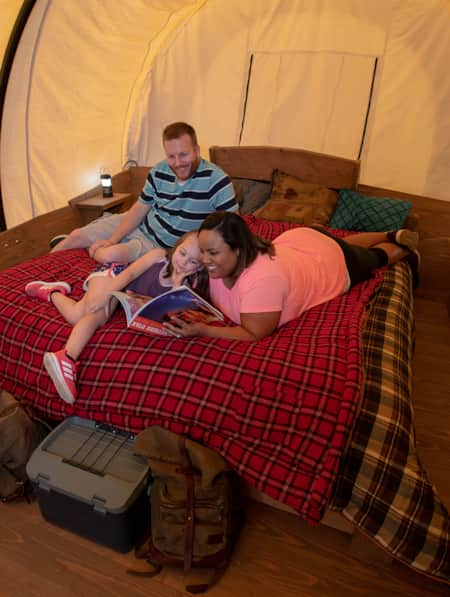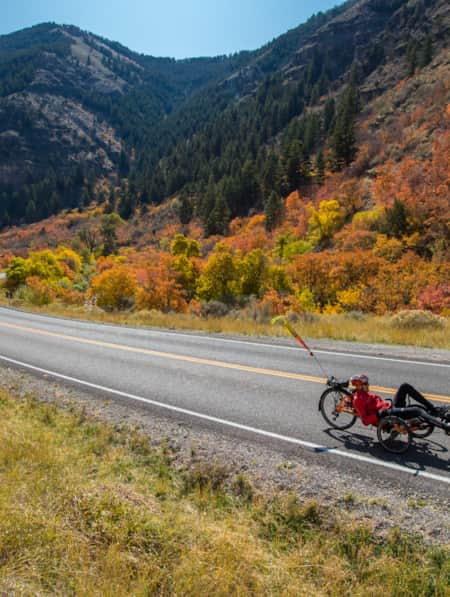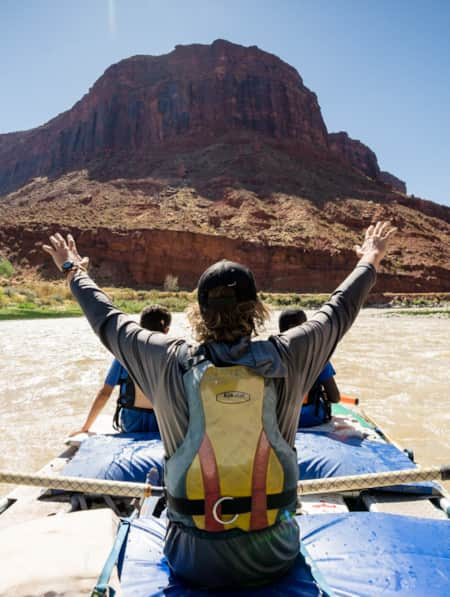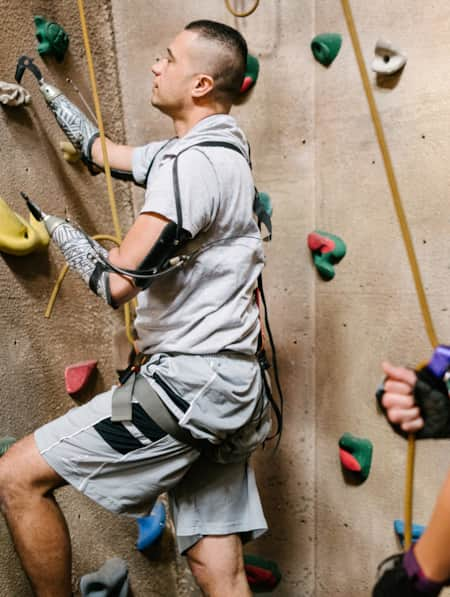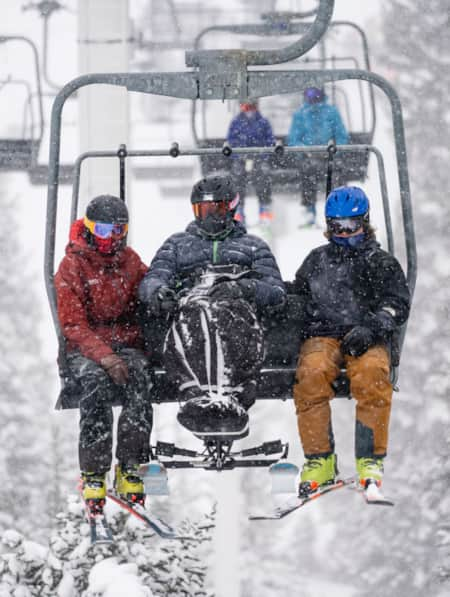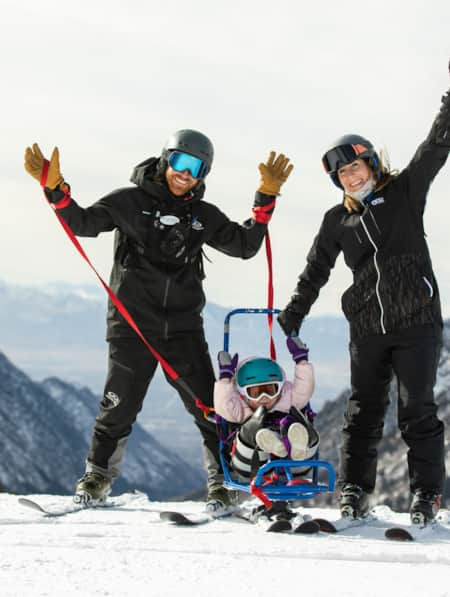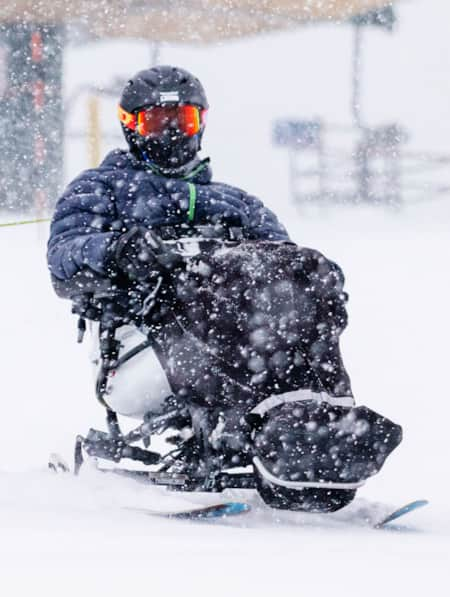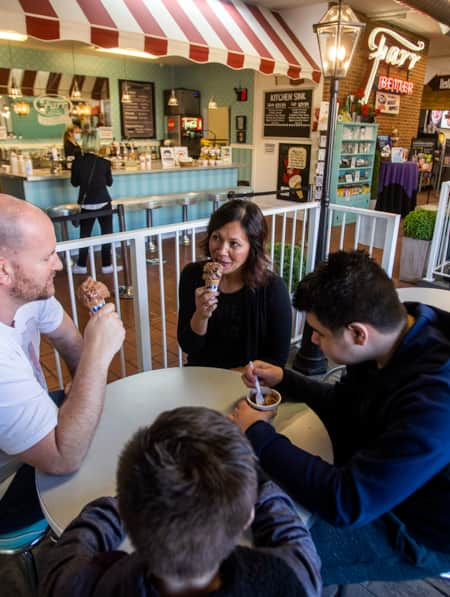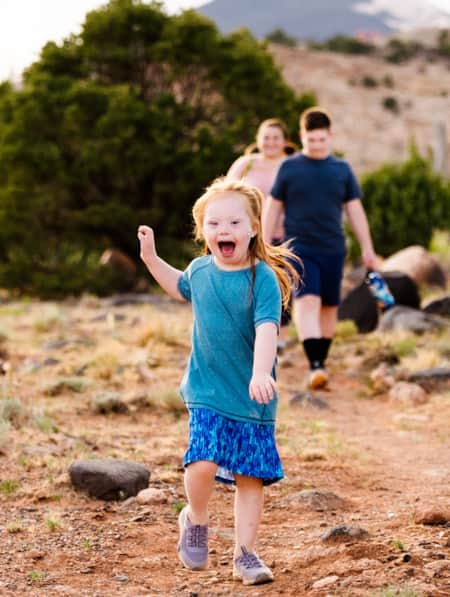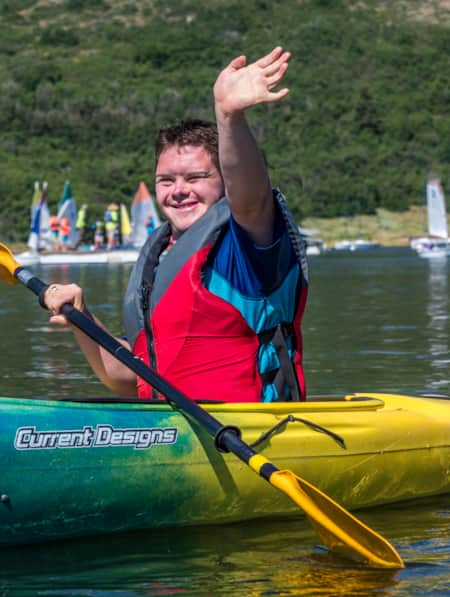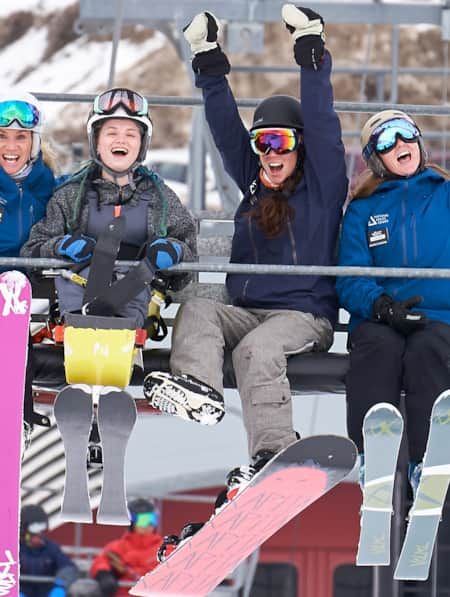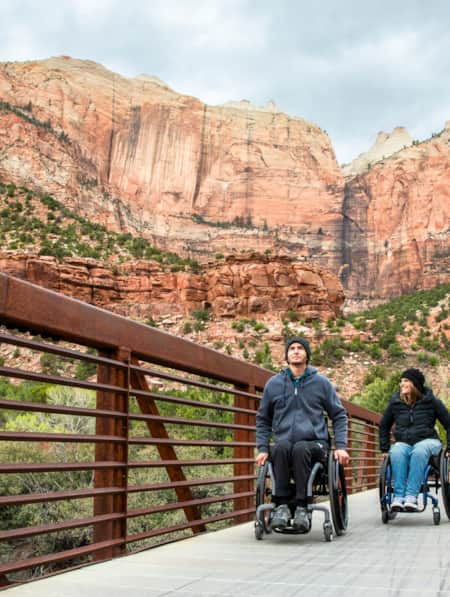Getting Back on the Mountain
Adaptive recreation puts everybody in the game, regardless of age or ability.

What’s a 68-year-old quadriplegic doing on a ski-bike at the top of Park City Mountain Resort’s First Time run? The short answer: having fun. A more complete answer is re-learning to ski with ingenious adaptive equipment, lessons and encouragement provided by the National Ability Center. (Read: "Spreading the Joy of Adaptive Recreation")
My goal is to be out here enjoying Utah’s incredible natural playground. I live 12 miles from Snowbird and Alta resorts in Little Cottonwood Canyon, 18 miles from Solitude and Brighton resorts in Big Cottonwood Canyon and 28 miles from Park City and Deer Valley just over the mountain from the Salt Lake Valley (insert smug smile here.. To not be here skiing The Greatest Snow on Earth® would be a big loss. Luckily, visitors to Utah enjoy the same easy access that I have.
Even from this gentle run adjacent to Park City’s base lodge, my gaze captures a nicely groomed ski slope, snow-covered rooftops and the pine and aspen covered mountains surrounding me. It’s a view that clears the mind and soothes the soul.
This was day one of a two-day lesson — an overcast, mild January day with gray skies and sticky snow. But I wasn’t focused on the weather. I was hanging on every word from NAC Instructor Jared Dangerfield, mentally comparing the new ski-bike technique with my decades old methods from the 70s.
Turns out the ski bike, an iSkibike® Agility 1.3, is foolproof. Designed and manufactured in Montana, it’s like a full suspension bicycle frame mounted on two skis, one behind the other. It has a spring-loaded seat that pops up to allow easy lift loading. Stand up slightly and the chair slides underneath. A small assist from Jared and volunteer Stephen Wilke and we were on our way up the hill.
Turning the ski bike is deceptively simple. A subtle hip shift to the right and a left turn is the result. Hip shift to the left and right turn. Short outrigger skis mounted on each foot provide some extra balance, but the bike does the work. With Jared’s savvy tips, I was making smooth slow turns down First Time by the end of my first lesson. As an old-school stand-up skier, it was a new sensation to be skiing sitting down. But, hey, I’m out here on the hill, putting gravity to good use and having fun. (Read: "TetraSki Offers Freedom and Independence for Skiers of All Abilities")
"The key is to adapt. Adapt thinking, methods and equipment. Just don’t give up."
Blue Skies and New Snow
Day two lesson, about four days later, brought bright blue skies, new snow and colder temperatures, which made sliding easier and my mood lighter. My second day Instructor was Tom Holmes, with volunteer Pete Miller along to help.
We reviewed my first lesson from Jared and hit the slopes. After five laps on First Time, with Tom’s insightful tips, I was linking smooth, fall line turns, skidding the rear ski to control my speed and unable to stop grinning with high fives all around. Tom even ditched the precautionary but unused tether. I swear the sun was warmer, the snow smoother and the sky bluer. Next time? I’ll be moving up the mountain via the Payday lift and beyond.
Reclaiming the Adrenaline Rush
I broke my neck in a diving accident while a student at Utah State University and was instantly paralyzed from the neck down. A quadriplegic. Fortunately, I had not completely severed the spinal cord and recovered a substantial amount of function. I never regained 100% but after 3 years of recovery and intensive physical therapy I was able to resume many of my outdoor pursuits, including skiing, which I had taught at Beaver Mountain. (Read: “When Turns Are About Adaptability, Not Disability”)
I went on to enjoy years of intermediate skiing before waning balance, reflexes and strength from a deteriorating spinal cord have forced me to give up stand-up skiing. Now, I’m walking with trekking poles, riding a three-wheel recumbent e-trike instead of a bicycle and re-learning to ski on a ski-bike.
For those of us with limited mobility, the sensation of sliding down a mountain is priceless. The freedom, the speed, the wind in the face and resulting adrenalin rush are coveted commodities hard to come by with a disability. Thanks to adaptive equipment like ski-bikes and mono-skis, we can reclaim our share of each. (Read: "Adaptive Skiing: Youthful Inspiration")
None of this would have happened without the equipment, instruction and support provided by the National Ability Center (Read: "Adapt, Access and Success") and the extraordinary instructors and volunteers who give generously of their time and talents.
Founded in 1984, the NAC’s stated mission is to empower individuals of all abilities by building self-esteem, confidence and lifetime skills through sport, recreation and educational programs.
Adaptive recreation activities include alpine and Nordic skiing, snowboarding, snowshoeing, horseback riding, hippotherapy, indoor rock climbing, swimming, archery, sled hockey, cycling, water-skiing, wakeboarding, kayaking, canoeing, paddle boarding and challenge course activities.
Through Splore Outdoor Adventures, they also provide adaptive river rafting, snowshoeing, climbing, and Nordic skiing throughout Utah’s mountain ranges and waterways.

Bob Wassom at the National Ability Center
Photo: Bob Wassom
"To my way of thinking, what [the National Ability Center has] done is transform Utah’s amazing terrain into a year-round life-changing playground."
A Life-Changing Playground for Everyone
To my way of thinking, what they’ve done is transform Utah’s amazing terrain into a year-round life-changing playground.
With their help, those of us with a disability can hold tight to the belief that no matter what life throws in our face, there’s a way to live a full, outdoor, active life. The key is to adapt. Adapt thinking, methods and equipment. Just don’t give up. It’s working for me.
The final message here is that anyone planning a trip to Utah can look forward to finding their favorite outdoor activity regardless of ability. There are organizations like the National Ability Center and lots of caring, compassionate people ready to help you experience it. I’m proof of that. (Read: “Utah's Outdoors Are Wide Open for All Abilities")


